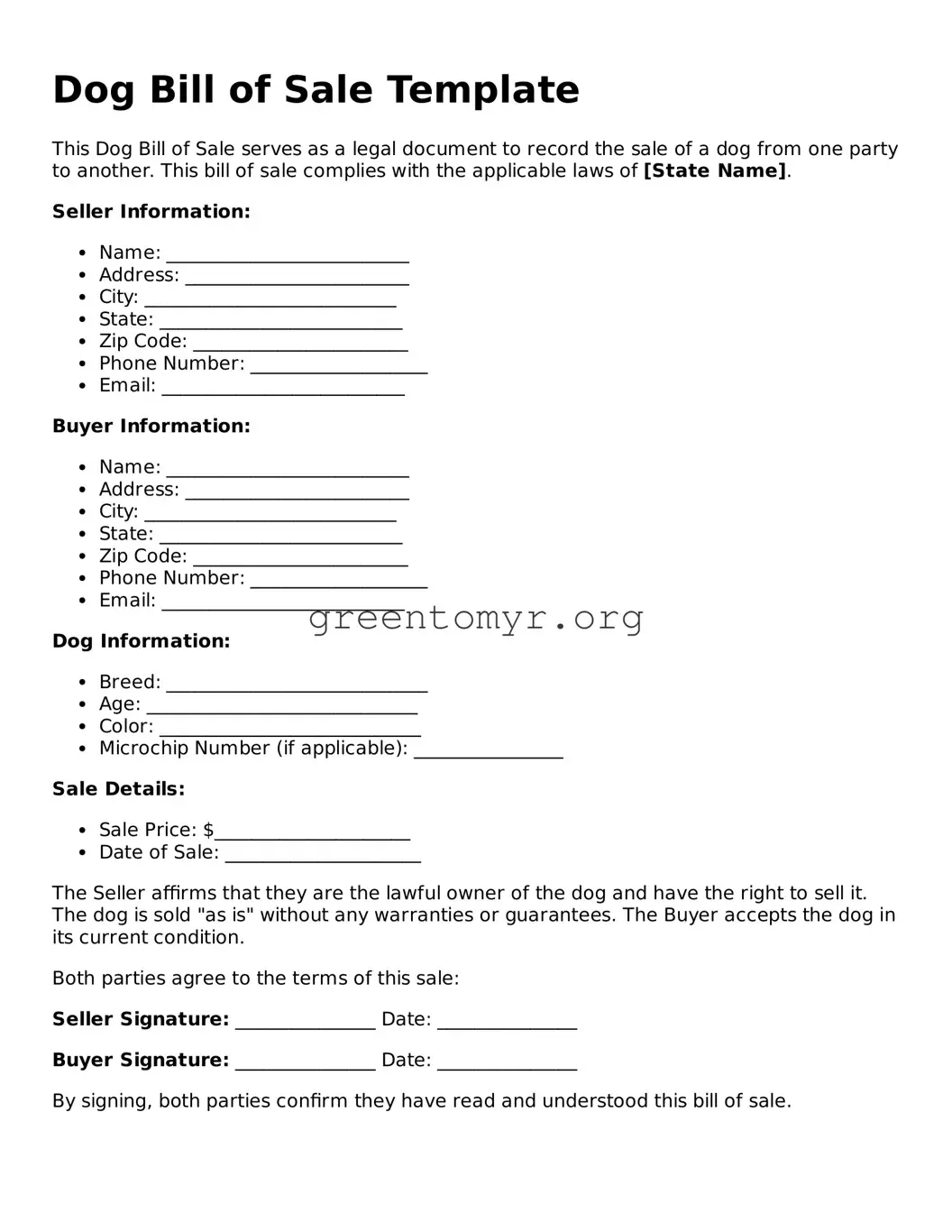What is a Dog Bill of Sale?
A Dog Bill of Sale is a legal document that serves as a receipt for the sale or transfer of ownership of a dog. This form provides essential information about the dog, the seller, and the buyer, ensuring a clear record of the transaction. It's an important tool for both parties involved, establishing trust and protecting their rights.
Why do I need a Dog Bill of Sale?
Having a Dog Bill of Sale is crucial for multiple reasons:
-
Ownership Verification:
It proves that you legally own the dog.
-
Record Keeping:
It helps track the history of the dog, including previous vaccinations and medical treatments.
-
Dispute Resolution:
In case of disagreements, this document can provide clarity on the terms agreed upon by both parties.
-
Legal Compliance:
Some states may require documentation for the transfer of pet ownership.
A typical Dog Bill of Sale includes the following information:
-
Seller's Information:
Name and contact details of the seller.
-
Buyer's Information:
Name and contact details of the buyer.
-
Dog's Information:
Name, breed, age, color, and any unique markings or identifying features.
-
Purchase Price:
The agreed-upon price for the dog.
-
Health Information:
Details about vaccinations, health records, and any known medical conditions.
-
Date of Sale:
The date when the transaction takes place.
Is a Dog Bill of Sale legally binding?
Yes, a Dog Bill of Sale is legally binding, provided that both parties willingly agree to the terms stated in the document. Once signed by both the seller and the buyer, it creates a record of the sale that can be referred to in case of any disputes. While not always necessary to be notarized, having a witness or notary can add an extra layer of security.
Absolutely! Customizing the Dog Bill of Sale form to fit your specific needs is encouraged. You can add clauses relevant to your situation, such as guarantees related to the dog’s health or terms regarding their care after the sale. Personalizing the document can help ensure that it reflects the unique details of your transaction.
What if the dog has medical issues?
If the dog has any existing medical conditions, it's essential to disclose this information in the Dog Bill of Sale. Transparency is key to building trust between the seller and buyer. Including any health issues in the document protects both parties and ensures the buyer is fully informed before completing the sale.
How can I get a Dog Bill of Sale?
You can obtain a Dog Bill of Sale from various sources. Many legal websites offer templates that you can download and customize. Additionally, working with local pet agencies, veterinarians, or legal professionals can provide you with a reliable and tailored document. Always ensure that the template you use meets your state’s legal requirements.
What happens if I lose the Dog Bill of Sale?
If you lose your Dog Bill of Sale, it’s important to recreate it as soon as possible. You can draft a new document, ensuring it contains all pertinent details. Both parties should sign the new version. If the original document was notarized or signed by witnesses, including those individuals in the recreation can help lend credibility to the new document.
